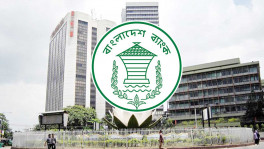Why Dhaka-Mawa Expressway, Karnaphuli Tunnel fell short of grand promises
The task force on economic reforms highlighted operational inefficiencies, poor planning, and lack of integration with existing infrastructure as key reasons for the underperformance of these projects
![[From upper left] File photos of Dhaka-Mawa Expressway, Padma Bridge Rail Link, Dohazari-Cox's Bazar Rail Line, and Karnaphuli Tunne;. Photos: TBS, Collected](https://tbsnews.net/sites/default/files/styles/big_2/public/images/2025/02/01/expressway-padma-bridge-dohazari-rail-line-karnaphuli-tunnel.jpg)
Four mega infrastructure projects initiated by the previous Awami League government have failed to deliver their expected benefits despite their high costs and ambitious goals, a task force formed by the interim government said.
The projects are the Dhaka-Mawa Expressway, Padma Bridge Rail Link, Dohazari-Cox's Bazar Rail Line, and Karnaphuli Tunnel.
In their report, the task force on economic reforms highlighted operational inefficiencies, poor planning, and lack of integration with existing infrastructure as key reasons for the underperformance of these projects.
Dhaka-Mawa Expressway
The 55-kilometre expressway, built at a cost of approximately Tk200 crore per kilometre, was expected to improve connectivity between Dhaka and Bhanga.
However, the project has been marred by long queues, traffic congestion at entry points, and the absence of ring roads around Dhaka.
Instead of reducing congestion and decentralising economic activities, the expressway has increased traffic inflow into Dhaka due to the lack of a synchronised industrial plan in the southwestern districts.
Additionally, it has disrupted traditional waterways, harming investors and operators in the sector. The failure to develop a multimodal transport system has further worsened road congestion.
Padma Bridge Rail Link
With a total cost of Tk392,468 crore, this project aimed to cut Dhaka-Jashore travel time from ten to two hours and enhance regional trade and connectivity. However, only three intercity and two mail trains currently operate on the route, with no freight services in operation.
Revenue generation has fallen significantly short of projections, with only Tk370 million earned in six months compared to an expected Tk13.39 billion annually.
Operational inefficiencies, poor integration with multimodal networks, and limited freight movement have prevented the project from delivering its promised economic benefits.
Dohazari-Cox's Bazar Rail Line
This Tk18,034 crore rail line, funded by the Asian Development Bank and the Government of Bangladesh, was designed to boost tourism, reduce road traffic, and support major economic projects, including power plants and a deep-sea port.
However, the project has not met expectations, with only two pairs of trains operating daily instead of the planned 22-passenger and six freight train pairs.
A shortage of rolling stock, inadequate manpower, and poor last-mile connectivity have hindered the line's ability to generate expected passenger traffic and revenue.
Karnaphuli Tunnel
Bangladesh's first underwater expressway tunnel, built at a cost of Tk10,375 crore, was intended to improve connectivity between Chattogram City and Anwara upazila, reduce travel time, and support industrial development.
However, the tunnel has seen far lower traffic than anticipated, averaging only 3,934 vehicles per day instead of the expected 17,000.
This has resulted in daily operating losses exceeding Tk26.50 lakh, with cumulative losses surpassing Tk90 crore since its opening.
The task force report attributes these shortcomings to a lack of institutional capacity in assessing feasibility studies and planning complementary activities such as land use and industrial development.




 Keep updated, follow The Business Standard's Google news channel
Keep updated, follow The Business Standard's Google news channel
















